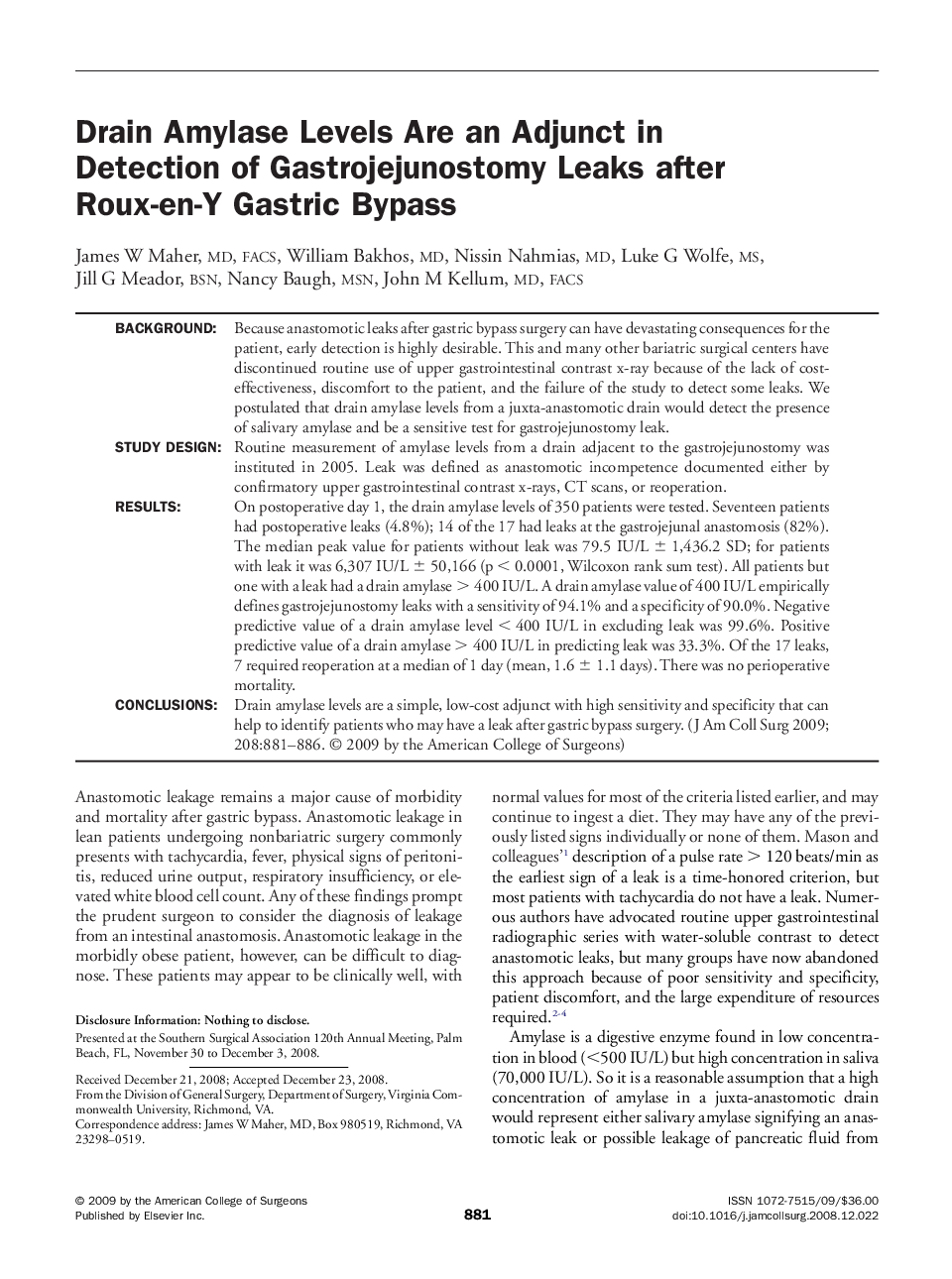| Article ID | Journal | Published Year | Pages | File Type |
|---|---|---|---|---|
| 4293890 | Journal of the American College of Surgeons | 2009 | 4 Pages |
BackgroundBecause anastomotic leaks after gastric bypass surgery can have devastating consequences for the patient, early detection is highly desirable. This and many other bariatric surgical centers have discontinued routine use of upper gastrointestinal contrast x-ray because of the lack of cost-effectiveness, discomfort to the patient, and the failure of the study to detect some leaks. We postulated that drain amylase levels from a juxta-anastomotic drain would detect the presence of salivary amylase and be a sensitive test for gastrojejunostomy leak.Study DesignRoutine measurement of amylase levels from a drain adjacent to the gastrojejunostomy was instituted in 2005. Leak was defined as anastomotic incompetence documented either by confirmatory upper gastrointestinal contrast x-rays, CT scans, or reoperation.ResultsOn postoperative day 1, the drain amylase levels of 350 patients were tested. Seventeen patients had postoperative leaks (4.8%); 14 of the 17 had leaks at the gastrojejunal anastomosis (82%). The median peak value for patients without leak was 79.5 IU/L ± 1,436.2 SD; for patients with leak it was 6,307 IU/L ± 50,166 (p < 0.0001, Wilcoxon rank sum test). All patients but one with a leak had a drain amylase > 400 IU/L. A drain amylase value of 400 IU/L empirically defines gastrojejunostomy leaks with a sensitivity of 94.1% and a specificity of 90.0%. Negative predictive value of a drain amylase level < 400 IU/L in excluding leak was 99.6%. Positive predictive value of a drain amylase > 400 IU/L in predicting leak was 33.3%. Of the 17 leaks, 7 required reoperation at a median of 1 day (mean, 1.6 ± 1.1 days). There was no perioperative mortality.ConclusionsDrain amylase levels are a simple, low-cost adjunct with high sensitivity and specificity that can help to identify patients who may have a leak after gastric bypass surgery.
